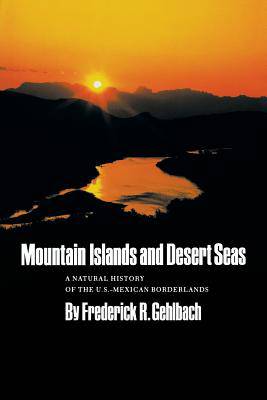
- Afhalen na 1 uur in een winkel met voorraad
- Gratis thuislevering in België vanaf € 30
- Ruim aanbod met 7 miljoen producten
- Afhalen na 1 uur in een winkel met voorraad
- Gratis thuislevering in België vanaf € 30
- Ruim aanbod met 7 miljoen producten
Zoeken
Omschrijving
"The most difficult stewardship is yet to come," was the final sentence in biologist Fred Gehlbach's 1981 book about the troubled natural history of the U.S.-Mexico border region. Mountain Islands and Desert Seas was the result of Gehlbach's years of study, travel, and intensifying dismay over the continuing development and degradation of a beautiful land where jaguars, grizzlies, and bighorn sheep once roamed. Today, the environment for environmentalism is more favorable and Mountain Islands and Desert Seas has now been released in paperback for a new audience. As Gehlbach suggests in his preface to the new edition, one millennium may be ending with heightened awareness, but in the decade since his book's first publication, "exceptional native landscapes remain unprotected or have been erased to provide human living space." Gehlbach's observations throughout the book are personal and passionate, and his pleas for change are backed by sobering statistics and illustration. One section of color photographs is labeled "Natural and Unnatural History," with paired photographs that show, for example a polluted rivulet through mine tailings and an unspoiled creek. The chapters visit the various regions and eras of the Borderlands, from the days of giant mammals to the first incursion of humans to the escalating arms race in which humans used more and more efficient weapons to rid the landscape of its natural inhabitants. The final chapter of the book relates the lessons of environmental abuse and alternatives for alleviating damage to the Borderlands, an area termed "living museums." Mountain Islands and Desert Seas was praised upon its publication, with Sierra magazine calling it "a first-rate natural history of the entire U.S.-Mexican border area. . . . [The reader] may profit greatly from the author's readable style and his sense of what is environmentally appropriate." Arizona Highways said it was "deeply rewarding reading for those even mildly interested in the environment and the region from the south of the Rio Grande to California's Imperial Valley."
Specificaties
Betrokkenen
- Auteur(s):
- Uitgeverij:
Inhoud
- Aantal bladzijden:
- 326
- Taal:
- Engels
- Reeks:
- Reeksnummer:
- nr. 15
Eigenschappen
- Productcode (EAN):
- 9780890965665
- Verschijningsdatum:
- 4/04/1981
- Uitvoering:
- Paperback
- Formaat:
- Trade paperback (VS)
- Afmetingen:
- 152 mm x 229 mm
- Gewicht:
- 408 g

Alleen bij Standaard Boekhandel
+ 103 punten op je klantenkaart van Standaard Boekhandel
Beoordelingen
We publiceren alleen reviews die voldoen aan de voorwaarden voor reviews. Bekijk onze voorwaarden voor reviews.











